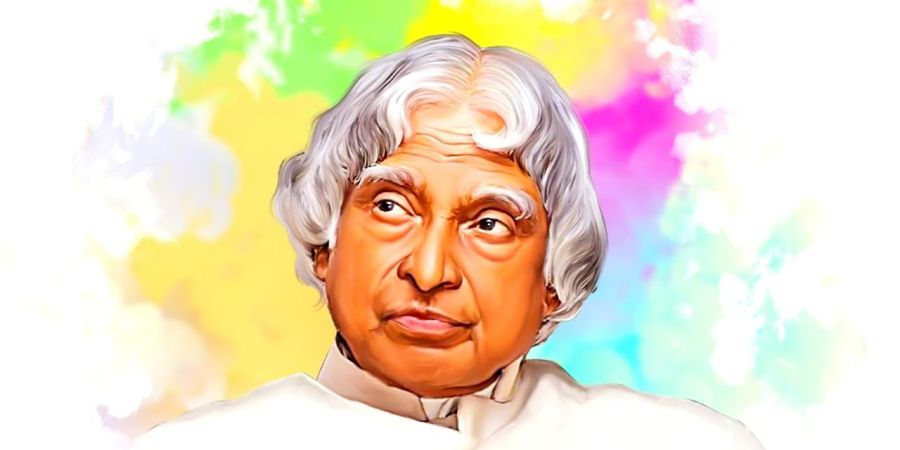

Dr. A.P.J. Abdul Kalam?
Introduction:
Born on October 15, 1931 in Rameswaram, Tamil Nadu.
His birth anniversary is celebrated as National Innovation Day and World Student Day.
He graduated in Science from St Joseph's College, Trichy in 1954 and majored in Aeronautical Engineering at Madras Institute of Technology (MIT) in 1957.
He is one of the best scientists in the world. India with the unique honor of receiving honorary doctorate degrees from 48 Indians and foreign universities and institutes.
He was sworn in as the 11th President of India in 2002 and completed his term in 2007.
He has planned programs to produce a number of successful rockets, earning him the nickname "Rocket Man of India".
Awards Received:
He has been awarded coveted civilian awards - Padma Bhushan (1981) and Padma Vibhushan (1990) and the highest civilian honor Bharat Ratna (1997).
Literary Works:
"Wings of Fire", "India 2020 - A Vision for New Millennium", "My Journey" and "Flaming Spirits - Unleashing Power in India", "Indomible Spirit", "Guiding Souls", "Visualization of an Empowered Nation", "Inspiring Thoughts", etc.
Died:
July 27, 2015 in Shillong, Meghalaya.
Contribution of Dr. A. P. J.Abdul Kalam?
His Contribution:
Glass Fiber Technology Pioneer:
He pioneered fiberglass technology and led a group of young people who initiated this effort at ISRO from designing, development that led to the production of composite rocket engine housings.
Satellite Launch Vehicle (SLV-3):
He made a significant contribution as project manager to the development of India's first Native Satellite Launch Vehicle (SLV-3) successfully injected the Rohini satellite into near-Earth orbit in July 1980 and made India an exclusive member of the Space Club.
He is responsible for the development of the ISRO launch program, especially the PSLV configuration.
Native Guided Missiles:
After working for two decades at ISRO and mastering launch technologies, he assumed responsibility for the development of indigenous guided missiles at DRDO.
He is the Director General of the Integrated Guided Missile Development Program (IGMDP).
It led to the militarization of strategic missile systems and the Pokhran-II nuclear tests along with the Department of Atomic Energy, making India a nuclear weapons state.
Technology Vision 2020:
In 1998 he presented a national plan called Technology Vision 2020, which he described as a road map to transform India from an underdeveloped society into a social development in 20 years.
The plan includes, among other measures, increasing agricultural productivity, emphasizing technology as a vehicle for economic growth and expanding access to health care and education.
Medicine and Healthcare:
APJ Abdul Kalam in collaboration with Cardiologist B. Soma Raju designed a cost-effective coronary stent called “Kalam-Raju-Stent” for heart disease Coronary arteries make health care accessible to everyone.
This device has helped to reduce the price of coronary stents imported into India by more than 50%. Light fighter Project
:
He is deeply involved in the country's light fighter project.
He was associated with avionics. He also became the first Indian head of state to fly a fighter jet. His first aviation project led him to design India's first seaplane "Nandi".
A seaplane is a vehicle that can travel over land, water, mud and ice by lifting itself off the ground using large fans to create a cushion of air beneath the vessel.
Others:
He is dedicated to bringing prosperity to the countryside through PURA (Providing Urban Utilities to Rural Areas), in which science and technology must play a key role.
Drawing on his diverse background, he propagated the concept of a global knowledge base, through which the core competencies of organizations and countries can be aggregated to innovate and create new solutions. solutions and products for the challenges of the 21st century
